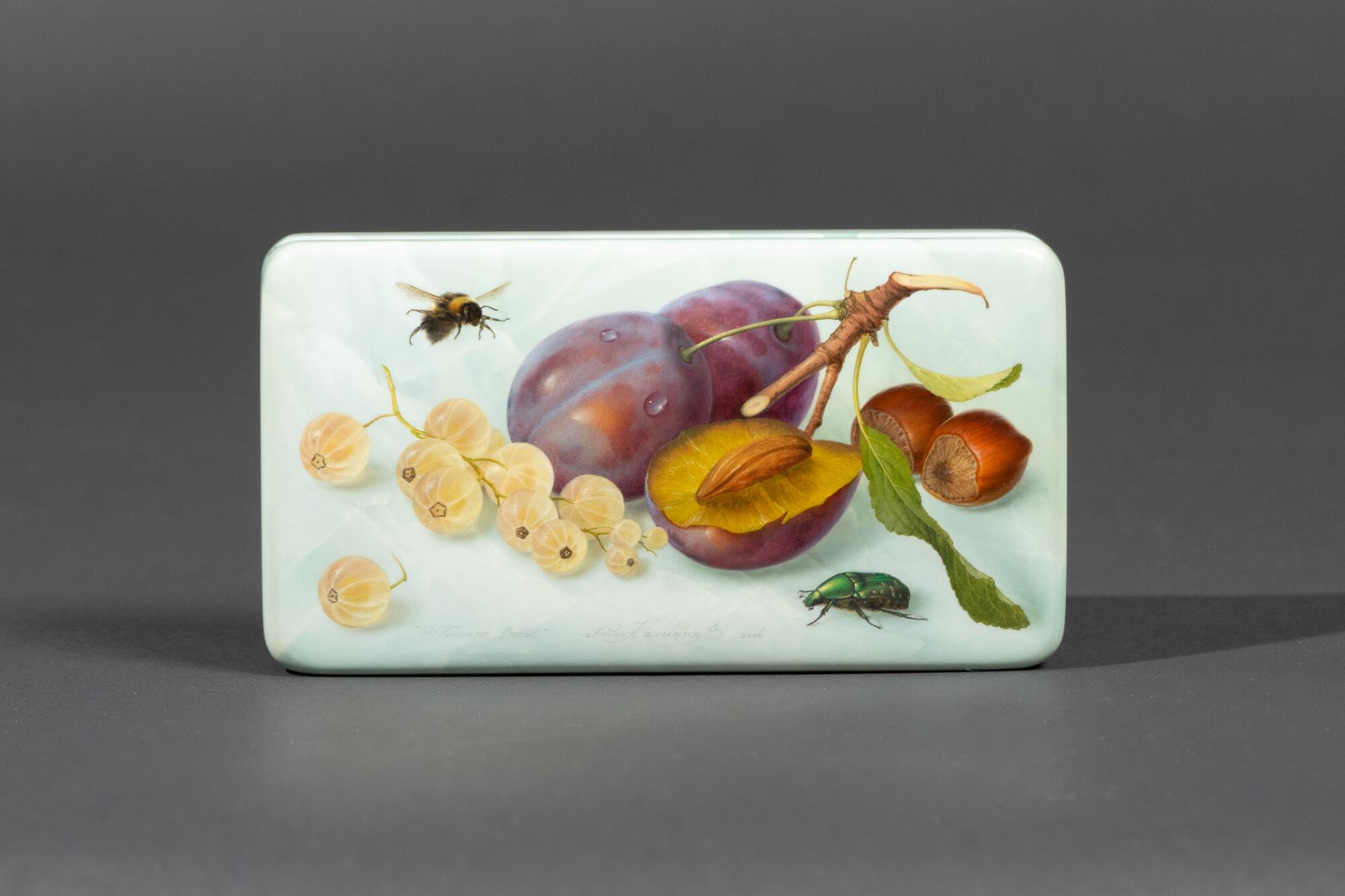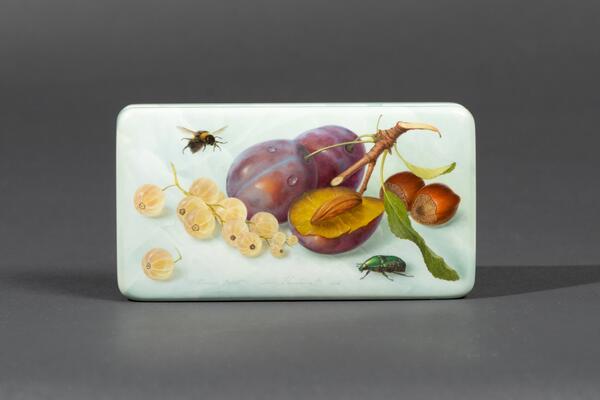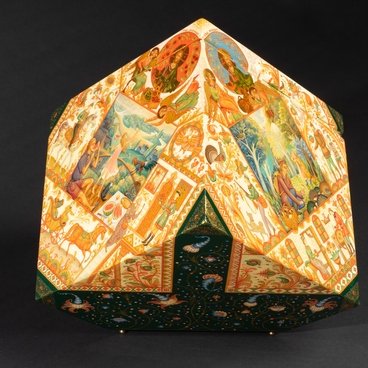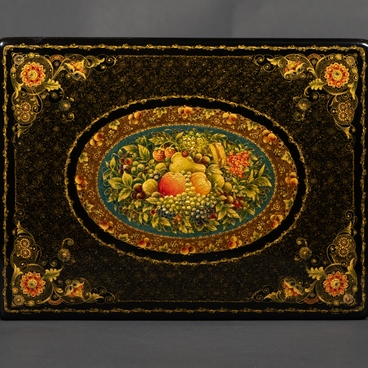Vladimir Kalinin is considered one of the best masters of still life among Fedoskino artists. At the beginning of his career, he tried his hand at portrait miniature painting; however, he truly discovered his talent after getting acquainted with the art of Dutch painter Jan van Huysum, who lived in the late 17th — early 18th century.
In Huysum’s works, the late Dutch still life reached its tremendous height. His works were so popular, that their price was several times higher than the one of Rembrandt’s canvases. The artist painted two types of floral still lifes: bouquets against a dark background and more expressive flowers — against a light one. A light background appeared in still life painting only in the 18th century.
Huysum’s works were distinguished by a subtle use of saturated colors and an amazing skill in working out details. All these features are also characteristic of Vladimir Kalinin’s works.
The artist developed an interest not only in the smooth manner of painting typical for artists of the 17th-18th centuries, but also in a special technique of perspective painting, which is called trompe l’oeil, which literally translates from French as “optical illusion”. This technique has been known since ancient times, but gained popularity in the 17th century.
Masters of trompe l’oeil still lifes created their artworks in such a way that the viewer perceived the image as a three-dimensional object. Artists skillfully used light and shadows, causing people to want to touch objects. Often, they painted half-drawn curtains, sheets of paper attached to a wall or hammered in nails, ripe fruits, elaborate shells and other items. According to some legends, even animals reacted to such deceptions during competitions between ancient artists: horses began to neigh at the sight of painted horses and birds tried to peck grapes which were depicted by a painter.
In the miniature ‘Trompe l’oeil’ Vladimir Kalinin repeated this famous technique: he created an optical illusion due to which it seems that plums, gooseberries, nuts and insects are three-dimensional. The master perfectly rendered the textures of objects down to the skin of plums with water droplets on it, matte foliage and a shiny beetle shell.
In Huysum’s works, the late Dutch still life reached its tremendous height. His works were so popular, that their price was several times higher than the one of Rembrandt’s canvases. The artist painted two types of floral still lifes: bouquets against a dark background and more expressive flowers — against a light one. A light background appeared in still life painting only in the 18th century.
Huysum’s works were distinguished by a subtle use of saturated colors and an amazing skill in working out details. All these features are also characteristic of Vladimir Kalinin’s works.
The artist developed an interest not only in the smooth manner of painting typical for artists of the 17th-18th centuries, but also in a special technique of perspective painting, which is called trompe l’oeil, which literally translates from French as “optical illusion”. This technique has been known since ancient times, but gained popularity in the 17th century.
Masters of trompe l’oeil still lifes created their artworks in such a way that the viewer perceived the image as a three-dimensional object. Artists skillfully used light and shadows, causing people to want to touch objects. Often, they painted half-drawn curtains, sheets of paper attached to a wall or hammered in nails, ripe fruits, elaborate shells and other items. According to some legends, even animals reacted to such deceptions during competitions between ancient artists: horses began to neigh at the sight of painted horses and birds tried to peck grapes which were depicted by a painter.
In the miniature ‘Trompe l’oeil’ Vladimir Kalinin repeated this famous technique: he created an optical illusion due to which it seems that plums, gooseberries, nuts and insects are three-dimensional. The master perfectly rendered the textures of objects down to the skin of plums with water droplets on it, matte foliage and a shiny beetle shell.



